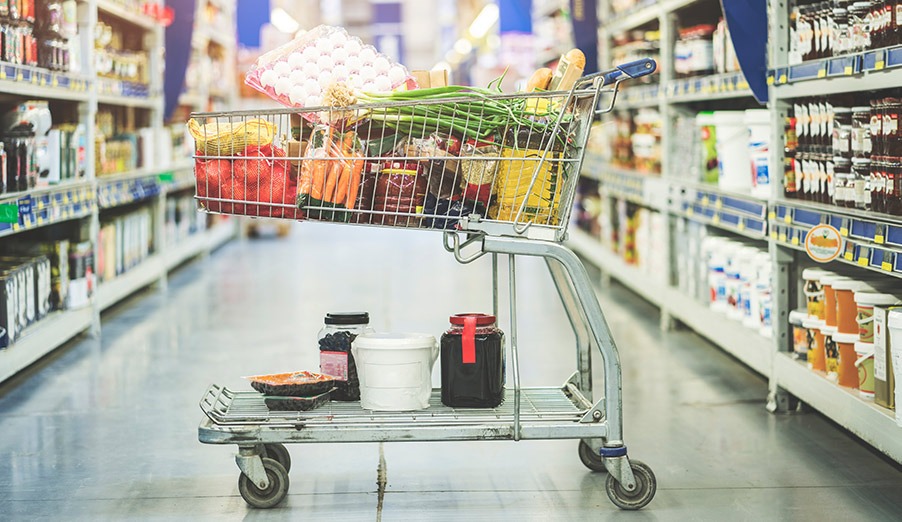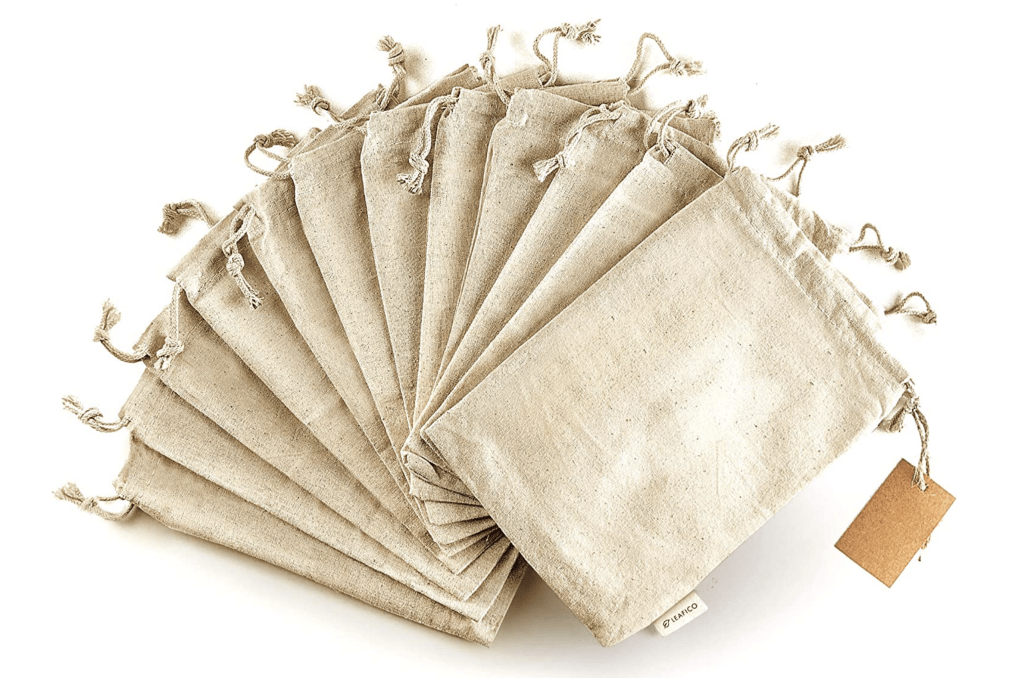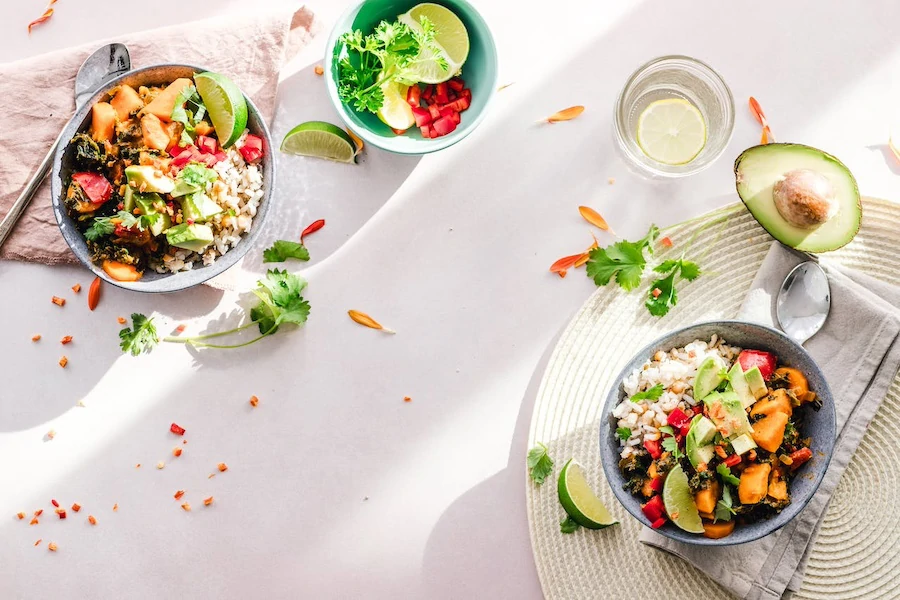
In the US, we waste nearly 40% of all food we buy. We’re also buying more and more items wrapped in plastic packaging. Eco-friendly grocery shopping is an important skill to learn to help minimize our waste and negative impact on the planet.
So, what are some tips for eco-friendly grocery shopping? Use reusable shopping bags, eat more plant foods, ditch the processed foods, buy foods that are in season, use reusable produce bags, buy less food, buy foods sold in eco-packaging, and avoid pre-washed or pre-cut foods.
Thankfully, the consumer trend is leaning towards more ethical ways of shopping. As a result, supermarkets and brands are making it easier to shop in an eco-friendly way. This guide will give you all the info and tips you need to become an eco-conscious consumer next time you’re at the grocery store.
8 Tips for Eco-Friendly Grocery Shopping
We’ve drawn on our experience and searched for help on the web to bring you the very best tips for eco-friendly shopping. It’s not just what you buy, but it’s how you buy too. Enjoy!
1. Make Use of Reusable Shopping Bags
If you head over to Europe, many grocery stores now charge customers a small fee for each plastic bag taken at the checkout. This is part of a national plastic bag fee to help phase out the use of single-use plastic bags.
In the USA, some grocery stores have copied this rule, but as a country, there is still no national plastic bag fee. If we look at the United Kingdom, since they introduced the national fee for plastic bags, they have achieved an impressive 90% decrease in plastic bag use.
Plastic bags are terrible for our environment. They clog up our waterways, harm our wildlife, and leach toxic chemicals in our soils. The single best thing you can do to fight against plastic pollution from supermarkets is to ditch the plastic bags.
Instead, purchase a couple of reusable shopping bags, also known as “bags for life.” You can now buy some pretty innovative reusable bags to make your shopping experience easier and “greener.” Just remember to take them with you each time you visit the grocery store!
2. Eat More Plant Foods
A few years ago, a study from Oxford University in the UK found that “A vegan diet is probably the single biggest way to reduce your impact on planet Earth, not just greenhouse gases, but global acidification, eutrophication, land use, and water use.”
The modern animal agriculture industry takes a significant toll on our environment from deforestation to make way for new farms to methane gases produced by animals to the sheer amount of waste created by the industry.
If you’re looking to become an eco-friendly consumer, the best thing you can do right now is to decrease the number of animal products in your diet and increase the number of plant foods.
As a bonus, following a plant-based diet has been shown by several studies to be more effective for losing weight and reducing your risk of developing type-2 diabetes, heart disease, high blood pressure, cancer, and even Alzheimer’s disease.
It’s a win-win for the environment, you, and the animals.
3. Ditch the Processed Foods
Processed foods are the biggest culprits of over packaging. They’re usually wrapped in three different types of plastic, paper, and cardboard. The more fresh foods you buy, the less packaging you’re responsible for bringing home and throwing into the trash.
You will also find that processed foods have a far higher carbon footprint than the fresh foods you can buy. This is especially true if you’re buying local and organic foods. When it comes to processed meats, the impact of the product can be anything from 10 to 100 times larger than plant foods.
The top 10 worst foods for the environment are:
- Lamb: 39.2 kg CO2
- Beef: 27 kg CO2
- Cheese: 13.5 kg CO2
- Pork: 12.1 kg CO2
- Farmed Salmon: 11.9 kg CO2
- Turkey: 10.9 kg CO2
- Chicken: 6.9 kg CO2
- Canned Tuna: 6.1 kg CO2
- Eggs: 4.8 kg CO2
- Potatoes: 2.9 kg CO2
If you buy processed versions of these foods, those figures quickly escalate. Try to buy as many fresh, local, and organic foods as possible for a more eco-friendly shop at the grocery store.
4. Buy Food In Season
As well as looking for fresh, local, and organic foods, you can go one step further and only buy seasonal foods. Think about it, if you buy an avocado in winter, then it must have been imported. Most likely, the avocado came from South America. That means each avo you buy will come with a hefty carbon footprint.
When we buy out of season, we’re encouraging products to be shipped over long distances. Instead, research what foods are in season in your particular region and focus on incorporating them into your diet.
Not only does buying in-season help to mitigate your impact on the environment, but it’s often much cheaper too, and it helps to keep your diet varied, which has been shown to improve your health.
5. Use Reusable Produce Bags
In point one on this list, we suggested using reusable bags for your shopping. You should also consider using reusable produce bags. When you buy loose fruit and veggies, it often means taking several small plastic bags for them to be weighed.
All this plastic further adds to the impact on the planet. Most likely, these produce bags are emptied at home and then thrown straight into the trash.
Leafico Reusable Produce Bags

These eco-friendly reusable produce bags are a quick and easy step to reduce your plastic waste while doing your regular grocery shopping. Made from 100% natural cotton which is machine washable, they come with removable tags that are perfect for labeling your different types of produce. Durable enough for everyday use, they are sold in packs of 12 and available in four different sizes, from small (5×7 inches) all the way up to extra-large (14×17 inches) for your heavier grocery shopping hauls.
Leafico Reusable Produce Bags (link to read reviews on Amazon) use doesn’t end just at the grocery store, they make great storage bags for the kitchen – perfect for storing bread, nuts, grains, and even straining yogurt! An ideal plastic-free storage option for makeup, jewelry, shoes, or any other on-the-go traveling needs. Leafico is an eco-friendly brand committed not only to the environment but to their customers as well, they offer one year warranty and 30-day money-back guarantee with no questions asked.
6. Buy Less
Sometimes the best eco-friendly choice you can make is to not make a choice at all. The less we buy, the less impact we have on the environment. Most of us buy too much, and this is probably why we waste nearly 40% of all we buy in the USA.
In fact, if we were to look at food waste as a country, it would be the third-worst emitter of greenhouse gas emissions on the planet.
If you don’t really need it, consider leaving it on the shelf. Not only will you have a less impact on the environment, but you’ll save a small fortune over the year. So, stop throwing money in the trash, create a solid shopping list, and leave any unnecessary items at the supermarket.
7. Buy Product With Eco-Packaging
Obviously, we can’t always avoid buying foods in packaging. It would be great if we could buy all the fresh and unpackaged foods from the perimeter, but for most of us, this isn’t possible.
If you do need to buy packaged foods, look for the brands that use eco-packaging. This may take a little extra time at first for reading labels. But, once you get into this habit, it becomes second nature. You’ll start to recognize all the common eco-packaging labels and terminology.
Eco-packaging is packaging that has been designed to have less impact on the environment. Common eco-packaging materials include:
- KRAFT Paper
- PET Plastic
- Glass
- Recycled cardboard and paper
- Compostable packaging
Brands that use eco-packaging aren’t shy of telling the consumer they’re using it. So, you will likely find labels and copy on the packaging telling you it’s eco-packaging.
8. Avoid Pre-Washed and Pre-Cut Foods
Originally, pre-washed and pre-cut foods were sold to help those with disabilities who would usually struggle to prepare their meals in the kitchen due to limited mobility. Now, an increasing number of people are buying these products for convenience.
The problem is, these products are usually sold in single-use plastic packaging. If you’re able to wash and cut your own foods, you should always buy them in their raw state, washing and cutting them yourself. The impact of these single-use plastics is devastating to the environment, and we need to drastically reduce our use of them.
Next time you’re in the supermarket, choose the fruits, veggies, nuts, and grains in their loose form where possible using your reusable produce bags. This will mitigate your impact on the environment in a big way.
Final Thoughts
As discussed above, many of our regular shopping habits are to blame for our negative impact on the planet. A few simple changes in the way we shop at grocery stores can go a long way in mitigating your personal impact on the earth.
Using this guide, we hope that you will find a much more eco-friendly way to shop next time you’re at the grocery store. Good luck!



